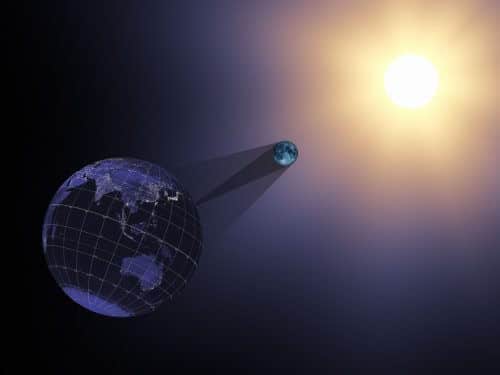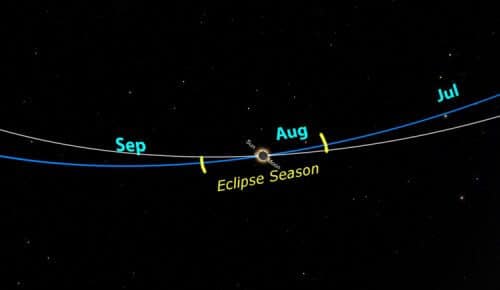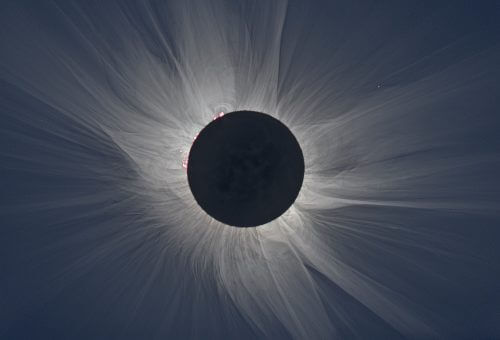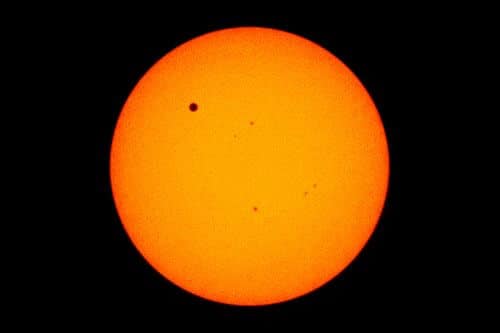A total solar eclipse will occur today, August 21, across the US. Shannon Schmoll, director of the Abrams Planetarium at Michigan State University, explains why and how solar eclipses occur, and what we can learn from them.

Author: Shannon Shmol, Director of the Abrams Planetarium, Department of Physics and Astronomy, University of Michigan
How do we know when a solar eclipse will occur? How do we know in advance where it will be possible to watch it?
Solar eclipses occur when our field of view of the sun is blocked by the moon. When the Moon is between the Sun and the Earth, it will cast a shadow on the Earth. This is what we on the ground define as a solar eclipse.
We know when they will occur because for hundreds of years astronomers have precisely measured the movements of the Earth, the Moon and the Sun, including the shapes of their orbits, and other parameters. With this data on the Moon - and similar information on the Earth's orbit around the Sun - we can build mathematical models of their movements relative to each other. Using these equations, we can calculate tables of data that can predict what will be seen on Earth, depending on location, during solar eclipses, and how long they will last (the next major solar eclipses in the US will occur in 2023 and 2024).
How many times a year do the defects apply?
A solar eclipse may occur at least once a year, but it is not always total. The moon passes between the earth and the sun every 29 days, a time we call the "new moon" - when the moon is not visible in the night sky of the earth. However, the Moon's path and the Sun's path of illumination in our sky do not exactly match, so in most New Moon events, the Moon appears above or below the Sun.

Solar eclipse events can occur consecutively a month apart. There is a period when the moon and the sun are more or less in line with the earth - astronomers call this eclipse season. Such a period lasts about 34 days, enough time for the Moon to complete a full orbit of the Earth. During each eclipse season, there are at least two solar eclipses in some parts of the Earth. Among them, when the moon is full, there will be a lunar eclipse, when the moon passes directly behind the Earth, resulting in the moon appearing dark and reddish, while on the new moon, there will be a solar eclipse, when the Sun is blocked by the Earth.
Can we learn anything from the eclipse events, or are they just one of the strange phenomena that happen in nature?
We can certainly learn things from solar eclipses. The outermost layer of the sun, known as the corona, is difficult to study because it is less bright than the rest of the sun - so we have difficulty seeing it except during an eclipse.
When the moon blocks the sun, we can see the corona - the halo of light that surrounds the moon's disk. Astronomers often investigate this by creating an artificial eclipse with a mask built into special devices on telescopes called coronagraphs, but still these devices do not allow the best pictures to be taken. An eclipse gives scientists an opportunity to study the corona in depth.

We can also learn about the Earth itself. In the area where the eclipse occurs, the darkening of the sun leads to a sudden drop in temperature. NASA-funded studies during this eclipse will examine the effects of the eclipse on our atmosphere, as well as on the ground. Previous studies observing animal behavior during the 2001 solar eclipse noted that animals went into their nighttime routines when the sun disappeared, while others became agitated.
We can also learn about the entire universe. Less than 100 years ago, the 1919 solar eclipse proved Albert Einstein's prediction of gravity. This success helped him become world famous. In his general theory of relativity, Einstein predicted that gravity can bend the beam of light. The effect he predicted was very small, in this way the light could best be seen passing by a very large celestial body on its long journey through space.
Sir Arthur Eddington, an astronomer who helped advance the study of general relativity and whose work is a major part of our modern understanding of stars and black holes, used the darkness provided by the solar eclipse to examine the position of starlight during the day, which is normally hidden by the Sun. He then compared these positions to their known positions at night. He saw that the sun's gravity bends the light rays - just as Einstein predicted and to the exact same extent.
How strange is it that the moon can actually block the sun?
This is very unusual, because the moon and sun just happen to be at the right distances and sizes that make them appear the same size in our sky. This allows the moon to block the disk of the sun, but also to show us the corona. Venus and Mercury for example, can also pass in front of the Sun from our point of view. However, they appear as small spots that move across the surface of the Sun.

What will the one who is on the moon and looking at the earth be able to see? Will the earth go dark?
If you were on the Moon, you would only be able to see the effects of a solar eclipse on Earth if you were on the night side of the Moon facing Earth at the time of the eclipse (new moon). You would see a round shadow on the earth. The eclipse will first appear in the Pacific Ocean, then it will reach the Oregon coast and cross the USA to South Carolina and end in the Atlantic Ocean. This path of the shadow is called the path of totality.
For news on The Conversation website
More on the science website about the complete solar eclipse 2017:
- The guide to the solar eclipse of August 21 in the USA
- Exclusive: An interview with the Israeli researcher who will chase the solar eclipse in NASA planes
- NASA is looking forward to the solar eclipse to help understand the Earth's energy system
- Live broadcast of the solar eclipse online from fifty balloons
- The moon takes center stage during a total solar eclipse
